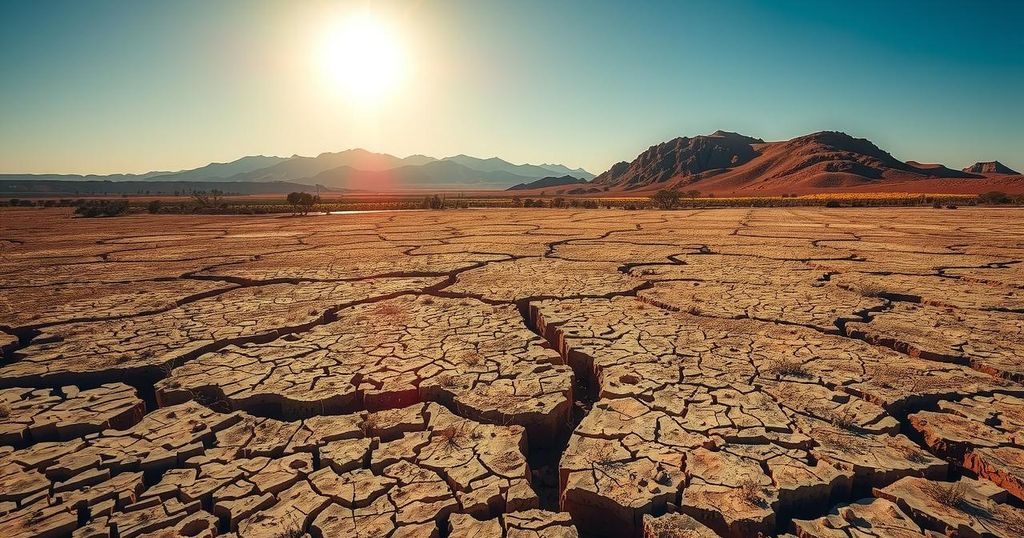Climate Change Increasing Heat Wave Frequency in South Sudan
A study indicates that climate change has rendered heat waves in South Sudan ten times more likely, exacerbating existing vulnerabilities due to war and food insecurity. The severe February heat wave led to school closures as temperatures reached 42 degrees Celsius. The study emphasizes the need for adaptations to reduce heat impacts, particularly on vulnerable populations.
A recent study by World Weather Attribution has found that climate change has significantly increased the likelihood of extreme heat waves in South Sudan, making a February heat wave ten times more likely and 2 degrees Celsius hotter. This weather anomaly led to school closures after numerous students suffered from heat stroke. In some regions, temperatures soared above 42 degrees Celsius (107 degrees Fahrenheit), exacerbating the existing struggles within the country, which has been marred by war and food insecurity.
The study utilized weather data, observations, and climate models, although it has not undergone peer review. South Sudan, situated in East Africa’s tropical zone, has contributed minimally to global greenhouse gas emissions despite experiencing severe repercussions from climate change. “The continent has contributed a tiny fraction of global emissions, but is bearing the brunt of climate change,” remarked Joyce Kimutai from Imperial College London.
Heat waves are notoriously deadly and have become more frequent in our warming climate. However, assessing the mortality rates associated with such events proves challenging due to varying methodologies and potential underreporting of death tolls. Vulnerable populations, particularly children, the elderly, and pregnant women, bear the greatest risk amidst prolonged heat.
Currently, a significant portion of Eastern Africa, including Kenya and Uganda, is facing extreme heat. Authorities have advised residents to stay indoors and hydrate, a directive made challenging by economic conditions and inadequate resources. In Juba, the capital of South Sudan, just 1 percent of the city consists of green space, offering limited respite.
Adaptations to mitigate this heat are imperative. According to climate scientist Kiswendsida Guigma, measures such as enhancing ventilation in schools, planting trees, and modifying school calendars may help alleviate the negative impacts on education and health. The ongoing economic and political instability in South Sudan compounds these climate challenges.
The study projects that with rising global temperatures, such extreme heat waves could become a recurring event, potentially manifesting every decade if warming continues, and even annually if temperatures double by the century’s end. High temperatures are expected to persist throughout March, posing significant risks to public health and education.
The findings from the study underscore the grim reality of climate change’s profound impacts, particularly in vulnerable regions like South Sudan. As extreme heat events become more frequent and severe, proactive measures and adaptations are crucial to protect health and educational outcomes for communities already facing significant challenges. The pressing need for global actions to mitigate climate change, given the disproportionate effects on developing nations, remains evident.
Original Source: www.nytimes.com




Post Comment